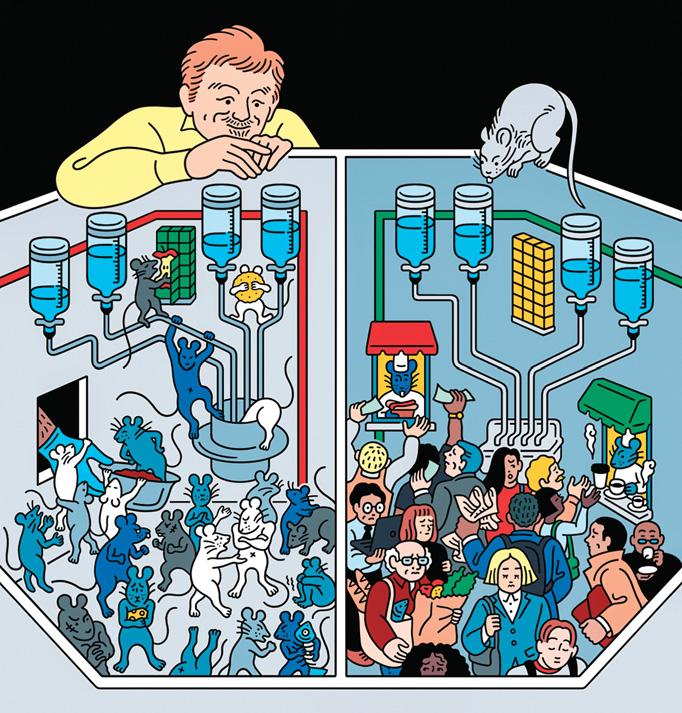
Ra Oats can't vomit. This may be a function of their anatomy-their stomachs are "not well structured for moving contents towards the esophagus" is how one study delicately put it--or it may have something to do with their brain circuitry, or it may be a combination of the two. Whatever the cause, the result is that rats, contrary to their popular (or unpopular) image, are fussy eaters. Even as they pick through the trash, they're hesitant to try new foods. This makes poisoning them complicated; quite often and quite literally-they won't take the bait.
In 1942, a Johns Hopkins biologist named Curt Richter discovered a new poison that rats apparently couldn't taste.
His breakthrough caught the attention of the United States Office of Scientific Research and Development, the Second World War equivalent of DARPA. The agency, among its many worries, feared that the Axis powers were at work on biological weapons that would use rats as vectors. (In fact, the Japanese did try to spread plague during the war, with some success.) The O.S.R.D. had the poison-alpha-naphthyl thiourea, or ANTU for short-tested in the back alleys of Baltimore. The city was so pleased with the resulting carnage that it appointed Richter to lead a new rodentcontrol office, based in City Hall. By 1946, ANTU-laced corn had been spread over more than fifty-five hundred blocks and, according to Richter, "well over a million rats" had been killed.
By that point, however, ANTU was starting to lose its efficacy. Apparently, rats were learning to associate adulterated corn with unpleasant consequences and becoming bait-shy. New measures, it was realized, would be needed, and an even more ambitious research effort was born-the Rodent Ecology Project.
Esta historia es de la edición October 07, 2024 de The New Yorker.
Comience su prueba gratuita de Magzter GOLD de 7 días para acceder a miles de historias premium seleccionadas y a más de 9,000 revistas y periódicos.
Ya eres suscriptor ? Conectar
Esta historia es de la edición October 07, 2024 de The New Yorker.
Comience su prueba gratuita de Magzter GOLD de 7 días para acceder a miles de historias premium seleccionadas y a más de 9,000 revistas y periódicos.
Ya eres suscriptor? Conectar

HOLIDAY PUNCH
\"Cult of Love\" on. Broadway and \"No President\" at the Skirball.

THE ARCHIVIST
Belle da Costa Greene's hidden story.

OCCUPY PARADISE
How radical was John Milton?

CHAOS THEORY
What professional organizers know about our lives.

UP FROM URKEL
\"Family Matters\" and Jaleel White's legacy.

OUTSIDE MAN
How Brady Corbet turned artistic frustration into an American epic.

STIRRING STUFF
A secret history of risotto.

NOTE TO SELVES
The Sonoran Desert, which covers much of the southwestern United States, is a vast expanse of arid earth where cartoonish entities-roadrunners, tumbleweeds, telephone-pole-tall succulents make occasional appearances.

THE ORCHESTRA IS THE STAR
The Berlin Philharmonic doesn't need a domineering maestro.

HEAD CASE
Paul Valéry's ascetic modernism.